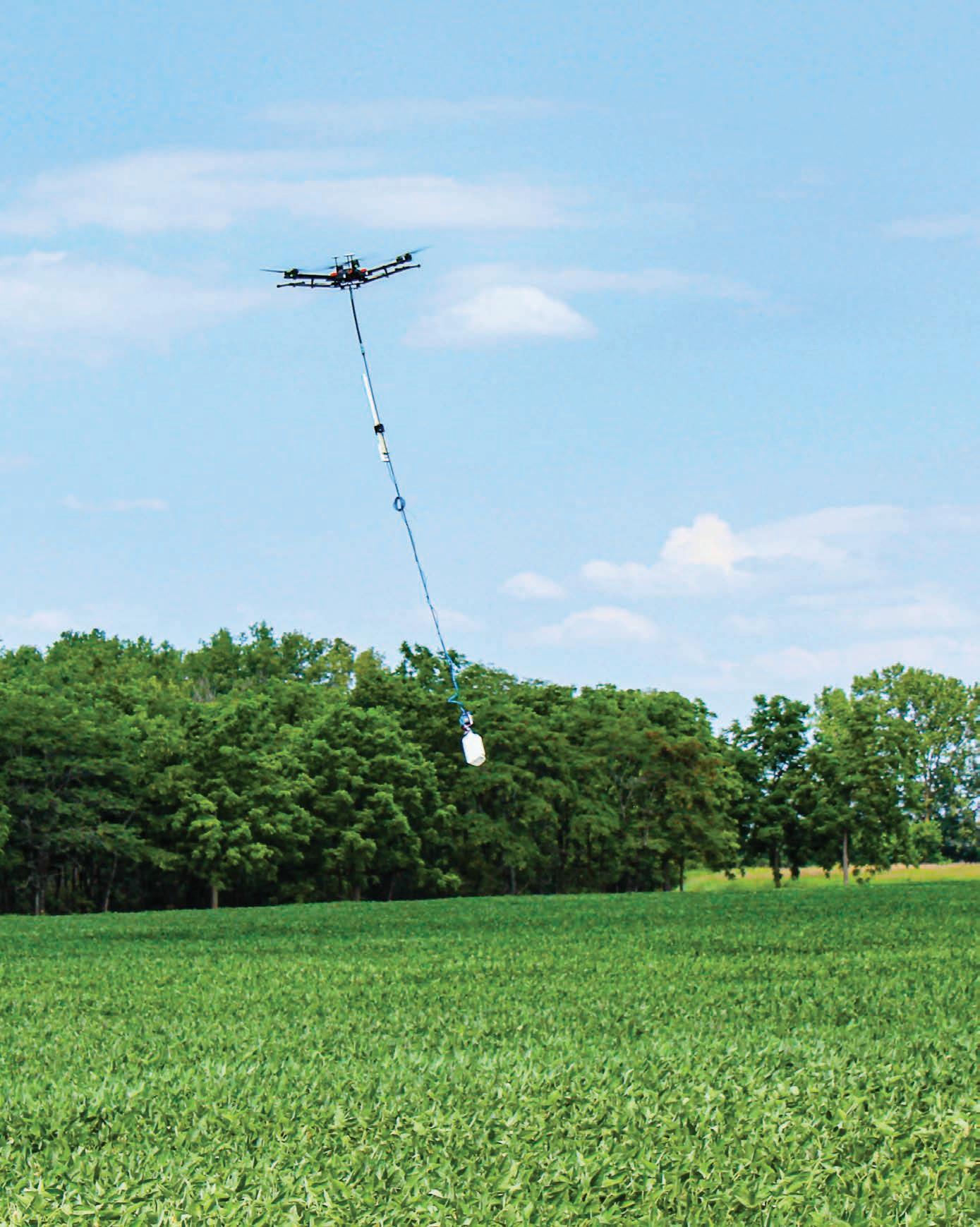










From promoting the profitability of using high-quality soybean meal in India to training animal producers on nutrition in Colombia, the soy checkoff is working behind the scenes to develop more market opportunities for U.S. soy. We’re looking inside the bean, beyond the bushel and around the world to keep preference for U.S. soy strong. And it’s helping make a valuable impact for soybean farmers like you.





See more ways the soy checkoff is maximizing profit opportunities for soybean farmers at unitedsoybean.org
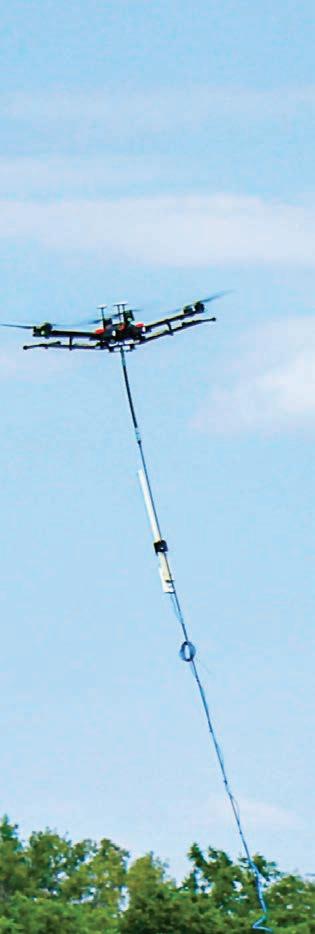








TheRyan Rhoades
Ohio Soybean Association President Marion County soybean farmer
next generation is sure to learn about the year 2020 in history books. Our lives have been upended in so many ways and I know we’re all looking forward to a time when we can get back to doing things the way we used to. It’s tough right now, but I also know that we’re all looking forward to a farmer’s favorite time of year – harvest.
While you’re spending time in the combine, you may want to check out the new Precision Ag Reviews (PAR) podcast. PAR is a checko -funded program that allows farmers the opportunity to write and read reviews about precision ag equipment. e podcast will cover a wide variety of topics and you can learn more about this on page 23. is season also brings local, state, and national elections with it. Be sure to check out page 12 for additional information that could help you as you make decisions about your ballot. Whether you plan to vote by mail or in person, make sure your voice is heard.
I couldn’t be prouder to serve as president of the Ohio Soybean Association this year as 2020 marks the 100th Anniversary of the American Soybean Association. is organization and its state a liates have played a pivotal role in building the U.S. soybean industry into what it is today. See page 6 to learn more about the history of this organization.
I wish you all a safe and productive harvest season!

Ryan Rhoades OSA President Marion County
President
Ryan Rhoades, Marion County
First Vice President
Patrick Knou , Shelby County
Vice President
Jennifer Wilson-Oechsle, Van Wert County
Treasurer
Je McKanna, Hancock County
Secretary
Rusty Goebel, Williams County
Chairman
Scott Metzger, Ross County
Trustees
Jerry Bambauer, Auglaize County
Trish Cunningham, Knox County
Bret Davis, Delaware County
Caitlyn Heimerl, Industry A liate Ex-O cio
Je Magyar, Ashtabula County
Derek Reusser, Holmes County
Andy Stickel, Wood County
Kerrick Wilson, Preble County
American Soybean Association
Board Representatives
Jerry Bambauer
Bret Davis
Scott Metzger
Sta Credits
Kirk Merritt - Publisher
Jennifer Coleman - Editor
Julia Brown - Contributing Editor/Sta Writer
Brent Warren - Art Director
Barry Falkner - Photo Quality/Proofer
Tony Green - Advertising Production
Ohio Soybean news is published six times a year by the Ohio Soybean Association, 918 Proprietors Rd., Suite A, Worthington, OH 43085. Phone: 614-476-3100. For address corrections contact Ohio Soybean News at 918 Proprietors Rd., Suite A, Worthington, OH 43085.
Web address: www.soyohio.org E-mail: cdeboard@soyohio.org
Comments and statewide news articles should be sent to the above address. Advertising space reservation must be made by the rst of the month preceding publication. In consideration of the acceptance of advertisement, the agency and the advertiser must, in respect of the contents of the advertisement, indemnify and save the publisher harmless against any expense arising from claims or actions against the publisher because of the publication of the content of the advertisement.
For Advertising Sales Contact:
Matt Herman - (612) 812-5833 matt.herman@dtn.com


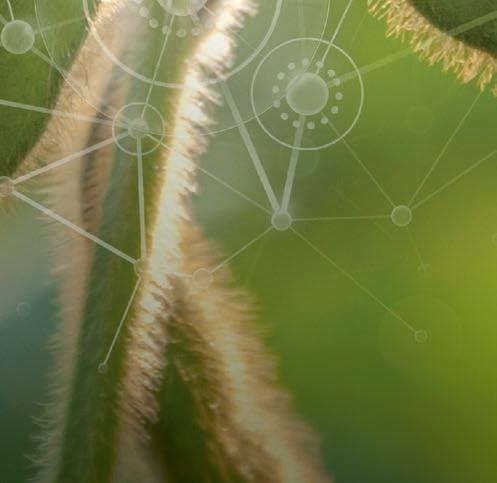

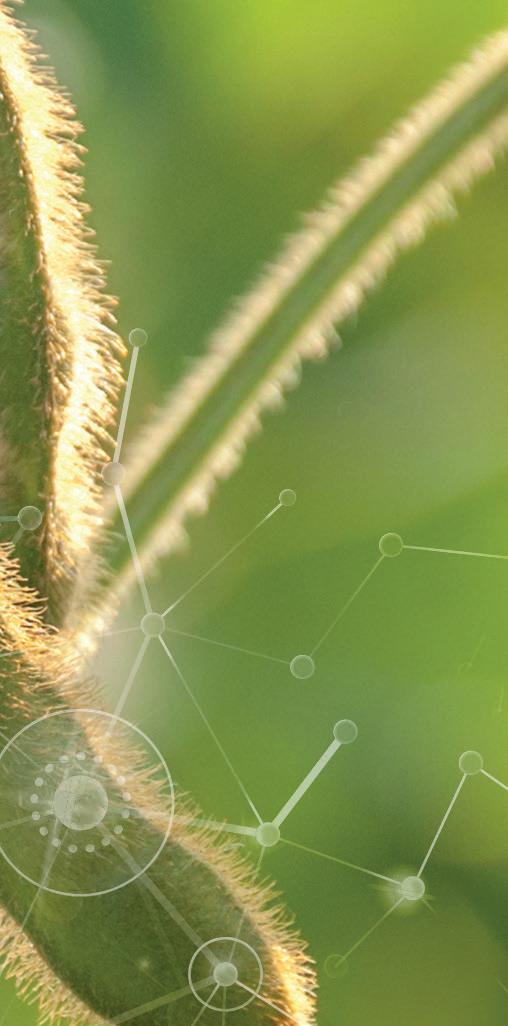
We partner with farmers to transform farming through technology.
Agriculture is How we ensure a sustainable future





As Ohio goes, so goes the nation. This year’s general election is significant not only because of the Presidential election, but for other important offices and candidates. The impact of COVID-19 on the primary election was significant and it is yet to be determined how this will impact the general election in November. Here’s what you need to know on the election for 2020: There are several importance dates to remember for the 2020 election. The general election voter registration deadline is October 5, 2020. Early voting begins the next day, October 6, 2020 with the election being held on November 3, 2020.
Besides the President election, there are several other major races and issues you’ll see in Ohio’s upcoming elections. All 16 of Ohio’s congressional seats are also up for grabs in 2020. Currently the delegation is occupied by 12 Republicans and four Democrats, and although Ohio’s legislature approved a plan to redraw the Congressional map, that won’t impact any election until 2022.
The races for the 12th and 13th Congressional districts will be monitored closely. In the 12th District, Republican incumbent Troy Balderson will face Democrat Alaina Shearer. Balderson has served one term in the House of Representatives, winning the seat with 51% of votes in the 2018 general election. Balderson was recently appointed to the House Ag Committee. Shearer is a businessowner and mom hoping to flip the seat from red to blue in November.
Christina Hagan (R) will take on long-time incumbent Tim Ryan (D) for the 13th District Congressional seat. Hagan had previously served in the Ohio House of Representatives, while Ryan has been a member of Congress since 2004.
There won’t be many statewide votes this election, with the exception of two Ohio Supreme Court seats.
Republicans Judith French and Sharon Kennedy are both seeking re-election to another six-year term on the state’s highest court. Currently,
five of the court’s seven judges are Republicans.
French faces a Democratic challenger in Jennifer Brunner, a former Ohio Secretary of State and current judge on Ohio’s 10th District Court of Appeals. Kennedy will face Democrat John P. O’Donnell, currently a judge on the Cuyahoga County Court of Common Pleas.
While the four candidates listed their respective party in the spring primaries, the general elections for Ohio Supreme Court seats are technically nonpartisan, so the candidates won’t appear with party designations come November.
It will be O’Brien vs O’Brien for the Ohio Senate 32nd District seat. Republican Sandra O’Brien of Lenox Township will try to unseat Democratic incumbent Sean O’Brien of Bazetta in November. Senator O’Brien is seeking his second fouryear term in the state Senate. The district includes all of Trumbull and Ashtabula counties and a portion of Geauga County. u



A soybean like this helped yield 79 Bu/A on Joe Bullerman’s farm last year. Not bad, but we think it can do 80. That next bushel might be in its genetics. Maybe in its next generation. Maybe somewhere else. Wherever it is, we’ll find it. Then we’ll find the next one.














On July 29, the House unanimously passed the bipartisan Water Resources Development Act of 2020 (WRDA) by a voice vote. The American Soybean Association (ASA) and Ohio Soybean Association (OSA) is pleased the bill includes changing the cost-share ratio for Inland Waterways Trust Fund (IWTF)-financed lock and dam projects to 65% general fund/35% IWTF through FY2027, a policy priority that soybean growers have been advocating for throughout 2020. Soybean growers had advocated for a permanent change, but view
this provision as a step in the right direction for improving the country’s waterways infrastructure to assure the movement of U.S. soybean supply to overseas markets remains efficient and reliable.
Of particular interest in Ohio, the bill includes language for the Army Corps of Engineers to develop a demonstration project under the bill to detect, prevent and eliminate harmful algal blooms.
The day before, ASA along with 27 agricultural groups, sent a letter to the House urging passage of WRDA while highlighting the importance
of making the cost-share permanent like the Senate version of this bill and not subject to the seven-year sunset clause included in this legislation. Introduced in May of this year, the Senate Environment and Public Works Committee’s WRDA bill has yet to be considered by the full Senate. u







At the time of publication, the bill has yet to pass through its Senate committee, but Congress is expected to once again pass a 2-year bipartisan WRDA bill on time this year. The Ohio Soybean Council works closely with researchers at The Ohio State University to keep you on the leading edge of soybean farming. OSU Professor Mark Loux has spent more than three decades studying weeds to help our state’s farmers protect their yields. With costly weeds like marestail and giant and common ragweed emerging in the fall, Loux suggests a burndown strategy may be key to an effective herbicide program.



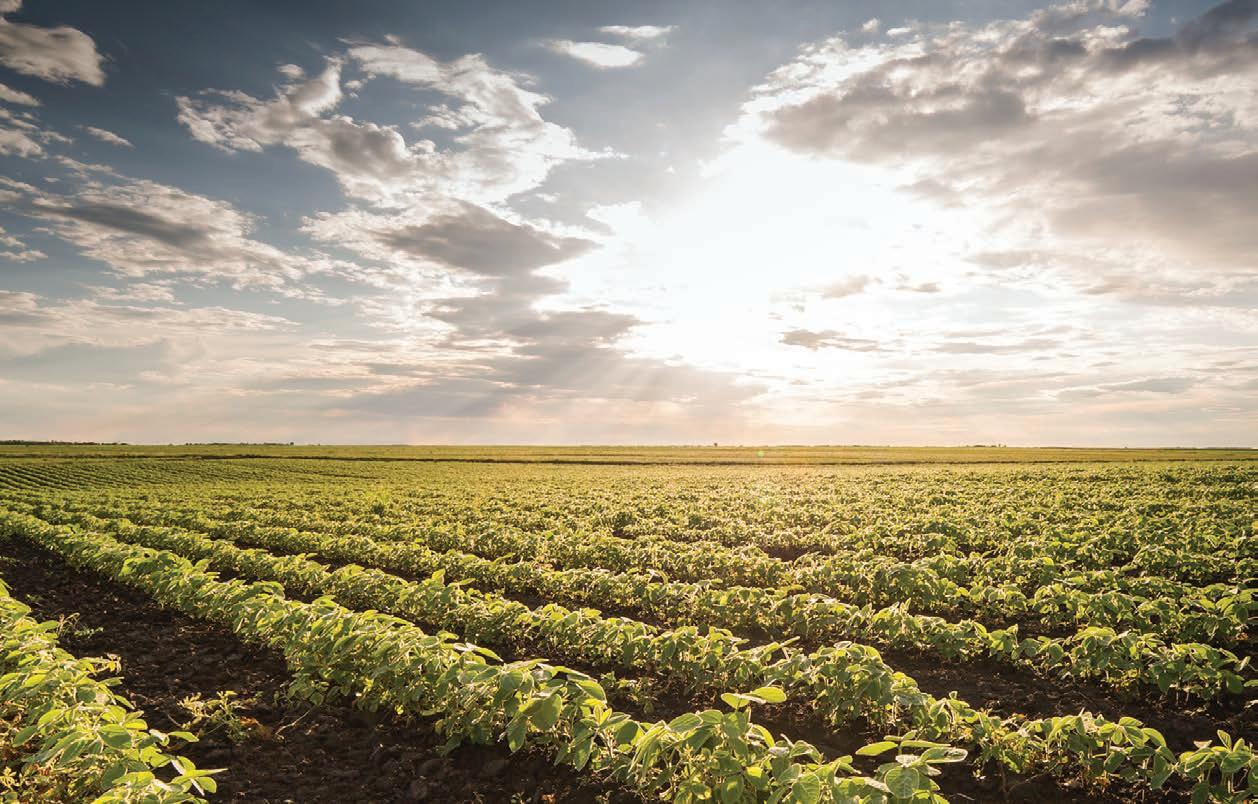
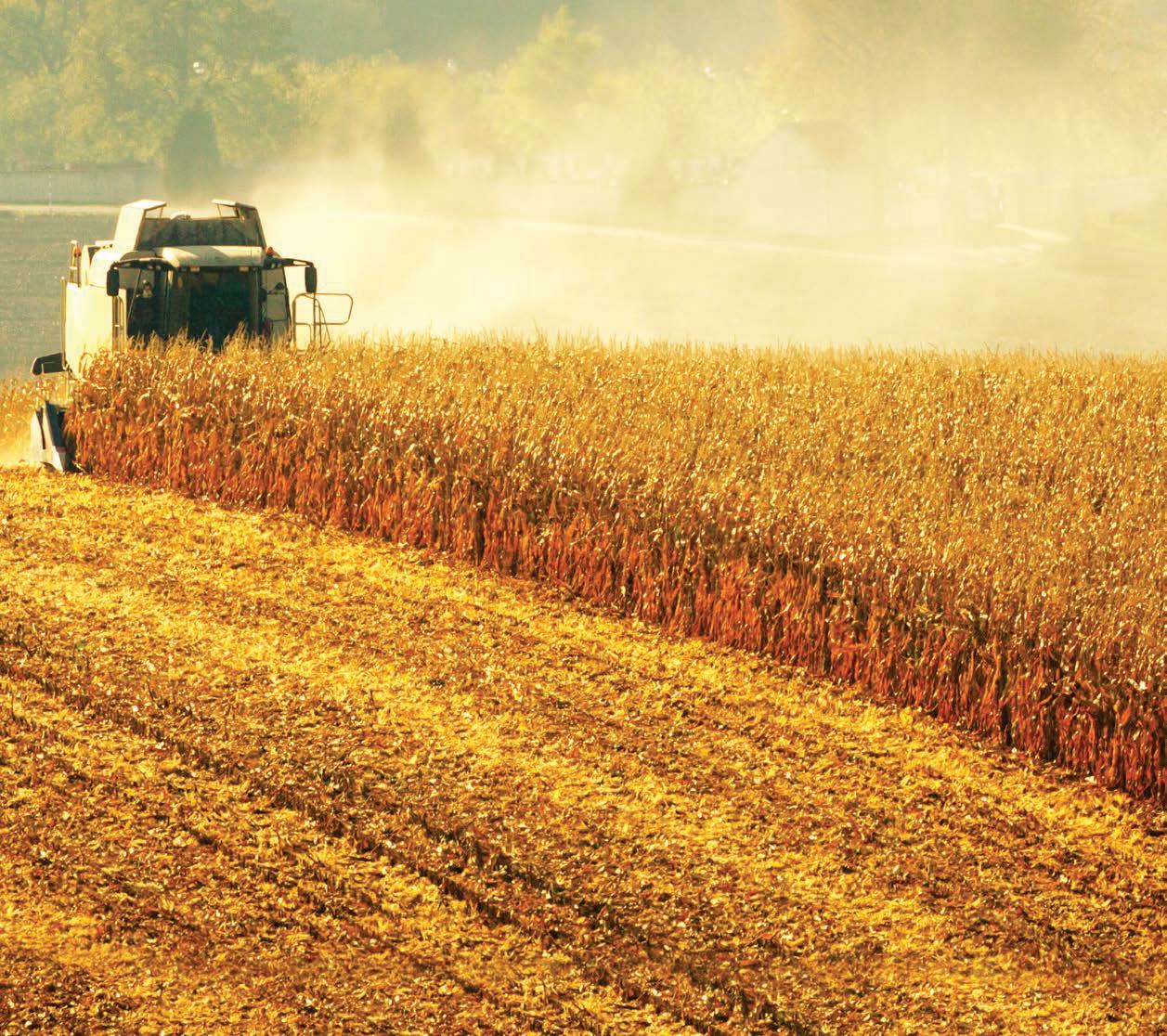



Eastern soils are unique and so are eastern farmers. We o er leading traits in genetics bred, tested and proven to perform on your farm. You’ll also receive assistance from seed professionals and agronomists, along with straightforward service and upfront o ers. It all adds up to Simply Better Solutions. See our website or call to learn more.



By Jill Wagenblast
Taylor Fouts of Camden, Indiana, began growing soybeans in the early 1900s. By 1907 he was proud of having 200 bushels of seed beans, which he characterized as a “unique possession.”
Taylor Fouts, along with his two older brothers, Finis and Noah, continued to focus on soybean production. The Fouts Brothers’ commitment to soybeans was so strong that they changed the name of their farm to “Soyland” in 1918.
With the general popularity of soybeans growing in the Midwest it was an opportune time in 1920 to hold a regional soybean conference. Organizers wanted the conference to be held on a farm with soybean experience and the ability to demonstrate growing and utilizing the crop. Soyland farm was the perfect location. Sponsors included Purdue University agriculture staff, county agents, agronomy departments of neighboring states and the U.S. Department of Agriculture crop specialist.

That first “Corn Belt Soybean Field Day” was held September 3, 1920 at the Fouts Brothers’ Soyland
In November 1940, ASA published the rst issue of a new monthly magazine titled, Soybean Digest. e magazine was created to provide news about ASA organizational proceeds and to disseminate information about the growing, marketing, handling, processing, and sale of soybeans. e cover of the rst issue is seen here.
ASA owned and published Soybean Digest for 53 years, selling it in 1993.
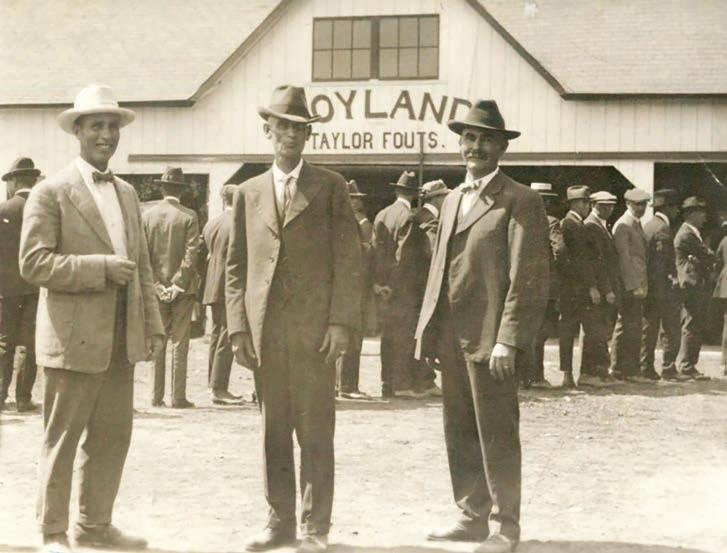
farm. More than 1,000 people from six states attended. While at the event, participants identified the need for an organization to promote soybeans and increase profit opportunities. The National Soybean Growers Association was founded and site host, Taylor Fouts, was elected president of the new organization.
In 1925, the National Soybean Growers Association name changed to American Soybean Association (ASA). Leaders believed the name change better represented future aspirations for developing the organization and the new crop into a major contender within agriculture.
In early policy activity, ASA celebrated a major legislative victory when its work helped get a tariff levied on low cost imported soybean cake and meal in 1928. In 1930, ASA helped enact a stronger
e three Fouts Brothers, (le to right) Taylor, Finis and Noah, at Soyland Farm during the rst Corn Belt Soybean Field Day, Sept. 3, 1920 in Camden, Ind, the birthplace of the American Soybean Association.
protective tariff for soybeans, soy oil and soy meal. In the 1940s, ASA opposed government efforts to reduce soybean production and restrict exports.
In 1940, with the association needing to take a next step in growth, ASA hired 29-year-old ASA director George Strayer from Hudson, Iowa, for a part-time position as executive secretary of the association. This was ASA’s first paid position, and it established Hudson, Iowa, as ASA’s headquarters.
By the late 1940s, ASA leaders were regularly traveling at their own expense to foreign countries seeking to find new markets for U.S. soybeans, soy oil and soy meal. ASA’s continuing efforts to market U.S. soybeans in foreign countries resulted in Japan becoming America’s largest single customer for soybeans by 1955. In 1956, ASA and the Foreign
Agricultural Service (FAS) signed the first joint market development contracts for work in Europe and Japan. With the FAS contract in hand, ASA established its first overseas office in Tokyo, Japan, in 1956.
In 1969, ASA reported for the first time that over half of the U.S. soybean crop for the year was exported. By 1984, ASA had 11 international offices conducting soybean export expansion activities in 76 countries.
In December 1962, the Minnesota Soybean Growers Association was the first state soybean organization to be founded. The group then sought state affiliation with ASA and was approved in 1963. State soybean organizations continued to form and affiliate with ASA in the decades to follow. Currently, all 26 state soybean associations are affiliated with ASA.
In 1978, ASA moved its headquarters from the small rural town of Hudson, Iowa, to the metropolitan area and central Midwest location of St. Louis, Missouri, where the growing organization could establish a world headquarters.
While many states began to initiate farmer-funded state soybean checkoff programs in the 1960s, with some of those states contributing varying amounts of checkoff dollars to help fund ASA soybean marketing activities, it wasn’t until the late 1980s that organized pursuit of a national soybean checkoff began. Through efforts led by ASA, legislation in the 1990 Farm Bill that passed established the National Soybean Checkoff; assessments began on Sept. 1, 1991.
In the 1980s, ASA focused on developing an export market for U.S. soybeans to China and continued its strong marketing activities in nearly 80 countries around the world.
In the 1990s, ASA began an even stronger focus on addressing agriculture and trade policy impacting U.S. soybean farmers. And in 1999, based on a petition filed by ASA, the U.S. Food and Drug Administration approved a new soy health claim for use on food labels.
In 2001 ASA launched the World Initiative for Soy in Human Health, known as WISHH, a program to promote the use of soy products in food aid programs worldwide. Under the 2002 Farm Bill, ASA lobbied successfully for
soybeans to be treated as a program crop, making farmers eligible for 44-cents/bu. direct payments and a $5.80/bu. target price. In 2004 ASA achieved a major legislative victory when the first ever biodiesel tax incentive was signed into law, dramatically boosting the production of biodiesel and use of soybean oil.
In the 2010s, ASA has had successes with passage of trade promotion authority, funding for waterways
infrastructure projects and labeling standards, to name a few. International market access and trade agreements continue to be top priorities for ASA.
In 1919, the year before ASA was formed, just 112,826 acres of soybeans were planted in the United States. Through a century of ASA’s broad-based efforts, 76.1 million acres of soybeans were planted in 2019, making soybeans the second largest U.S. crop. u
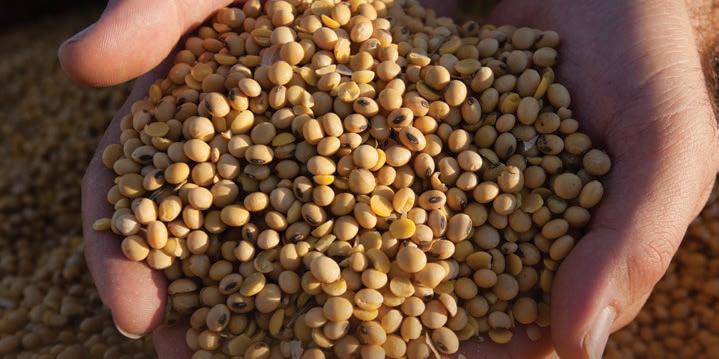

ADVOCATING FOR YOUR BUSINESS
Ohio Farm Bureau advocates for agriculture with legislators, regulators, in the courts and with the media. Farm Bureau’s position on issues works through a grassroots process that starts with the county Farm Bureau, then state and ends with the American Farm Bureau in Washington D.C.

SHAPING YOUR FUTURE WORKFORCE
Ohio Farm Bureau Foundation created ExploreAg to start recruiting a workforce the future agriculture industry needs by encouraging young people to consider a career in the food, farm and ber industry.

MONEY SAVING BUSINESS SOLUTIONS

Members save by accessing our Health Bene ts Plan, Workers’ Comp group rating program, energy program, and Nationwide® Insurance products and services, plus much more. Members save on brands like Ford, John Deere, Case and CAT to name a few. PROTECTING WHAT MATTERS MOST Through our partnership with Nationwide® members can access insurance and nancial services products that protect their families, homes and businesses. NETWORKING WITH PEERS The







The American Soybean Association (ASA) has returned to its roots to celebrate a century of coordinated efforts and ensuing successes on behalf of U.S. soybean growers. With support from the Indiana Soybean Alliance and the family who helped launch one of the nation’s strongest agricultural advocacy offices, ASA celebrated its 100th anniversary on the Indiana farm where it all started with a small but significant historical marker dedication and tours of heirloom soybean plots.
ASA was formed when brothers Taylor, Noah and Finis Fouts hosted the first Corn Belt Soybean Field Day at their “Soyland Farms” operation in Camden, Indiana, Sept. 3, 1920. Unlike today’s more quaint and socially distanced ceremony, that event drew nearly 1,000 farmers and their families from six states, all of whom were interested in discovering more about an emerging new commodity called soybeans.
a special video montage leading up to the live event. Among those helping the organization celebrate in Indiana were USDA Deputy Secretary of Agriculture
Steve Censky, who served the soy industry as ASA CEO for two decades, and Indiana governor Eric Holcomb, along with other notable guests from Purdue University, Indiana Soybean
Speaking with respect and appreciation of the hardworking and pioneering soy industry, Governor Holcomb commented, “What hasn’t changed in 100 years is the resilience and eternal optimism — timeless traits.” He also shared the entertaining tale of Taylor Fouts delaying his wedding hour to finish his daily work in the soybean fields.
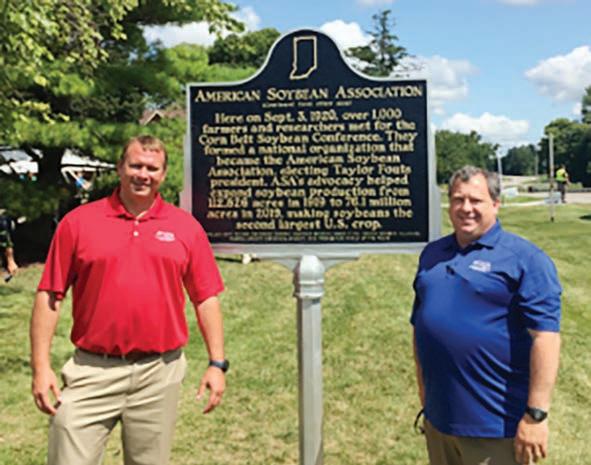
Deputy Sec. Censky spoke of the long, successful collaboration between USDA and the soy family, which he shared dates back to that first Fouts Farm event in Indiana 100 years ago. After providing comments on USDA agriculture priorities including COVID-19 relief, Censky referenced a quote in American Soybean magazine from former ASA president Tony Anderson of Ohio, who profoundly said, “ASA isn’t relevant because it’s 100 years old. It’s 100 years old because it’s relevant.”
The National Soybean Growers’ Association — later renamed the American Soybean Association — was formed that very day.
The outdoor ceremony was streamed live for soy supporters to celebrate safely across the country. Originally planned was a group picture emulating a historic black and white photo of the original attendees, but instead, farm families from throughout the soybean states submitted dozens of photos for
ASA President Bill Gordon (MN), le , and Secretary Brad Doyle (AR), right, pose with the historical marker unveiled today on Fouts Soyland Farm to celebrate the site where ASA began 100 years ago.
Alliance, the Fouts family and ASA’s past and present leadership.
Kendell Culp, ASA director from Indiana and event host, provided opening remarks. ASA President Bill Gordon, Minnesota, and past President Alan Kemper, Indiana, were also among those who delivered remarks before Indiana Gov. Eric Holcomb unveiled the historical marker.
Representatives from Ohio included Ross County soybean farmer Scott Metzger, Delaware County soybean farmer Trish Cunningham and Williams County soybean farmer Rusty Goebel.
ASA debuted a special video history of the Fouts Family and Soyland Farm, and — something you could only be lucky enough to see once in a hundred years! — a live musical performance by past and current ASA board members of Growing Soybeans to Get Along, a song written by Taylor Fouts and sung at the first soybean event back in 1920. u
For more information on the 100th anniversary of the American Soybean Association, visit ASA100Years.com

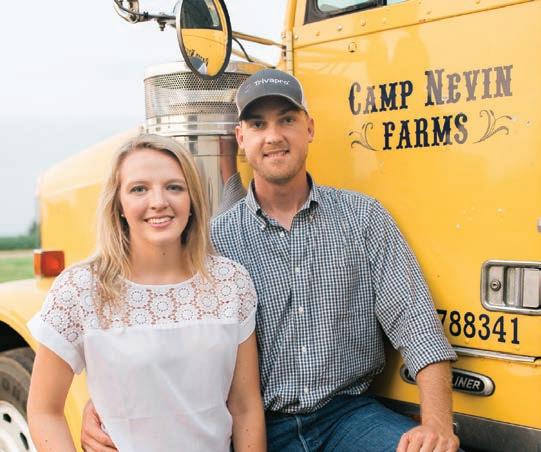


Apply for the 2021 ASA Corteva Agriscience Young Leader Program!
The Young Leader program, sponsored by ASA and Corteva Agriscience, provides training for actively farming couples or individuals who are passionate about the future of agriculture.
This two-phase training program is unique in that your spouse (if applicable), even if not employed full time on the farm, may actively participate in all elements of the training.
As a Young Leader participant you will:
• Engage in leadership training that will enhance your farming operation, as well as the other organizations in which you serve
• Gain tools to better enable you to tell your story
• Meet and learn from agricultural industry leaders
• Connect with soybean farmers from the U.S. and Canada, creating valuable new agricultural relationships
PHASE I
Tuesday, December 1 – Friday, December 4, 2020, in Johnston, Iowa
PHASE II
Tuesday, March 2 – Saturday, March 6, 2021, in San Antonio, Texas, in conjunction with Commodity Classic
For more information about the Young Leader Program and to apply for membership in the class of 2021, go to soygrowers.com.



By Julia Brown
It is no secret that common soybean weeds are beginning to develop resistance to tried-andtrue herbicides like Roundup, which is a problem given that 95 percent of Ohio soybean acres were planted with herbicide-tolerant seed in 2019. But a potential solution to this increasingly urgent problem lies not on the ground, but several feet in the air.
Over the last decade, drones have taken over — both in agricultural and non-agricultural spheres, for work and for play, drones quickly became part of the national consciousness. Drones, or small unmanned aerial systems (sUAS), have proven useful in agriculture for being a cost-effective way for farmers to scout from a bird’s eye view. Research being conducted at The Ohio State University (OSU) funded by the Ohio Soybean Council (OSC) and soybean checkoff is working to expand sUAS’ capabilities.

The project, headed by Dr. Scott Shearer, professor and chair of Food, Agricultural and Biological Engineering at OSU, aims to help growers map and identify weed escapes by using sUAS as a precursor for targeted eradication. Traditionally, weed identification and detection involves manual scouting and visual inspection, which can be inefficient, expensive and time consuming. With drones becoming increasingly available to farmers and with the advances in analytical tools, weed detection and eradication could be accomplished with greater speed and accuracy.
The project involves suspending a fiberglass rod from a multirotor drone down into the plant canopy. This rod has a sensor head with multiple cameras that take photos of emerging weeds. The sensors capture high-resolution imagery, which can then be used for real-time plant stress classification. Shearer explained that as the technology stands now, by the time the weeds reach above the plant canopy,
it can be too late to stop the damage. But if a farmer can discover weeds in earlier stages, there is a better chance of fixing the problem and containing the weed population for future years.
The project consists of using the fiberglass rod on a drone to take photos of weeds escapes in various stages of development and compile a database of images that can then be used to train Convolutional Neural Networks (CNNs), which are AI algorithms used for image recognition, to identify weeds again in the future.
“Our classifier will extract up to 10,000 different image features,” Shearer said. “You can’t really wrap your brain around 10,000 images. We know what different diseases, deficiencies, and weeds look like and what effect they have on the plant. All those manifest themselves in different ways in terms of those images. What the neural network classifier does as we train it is it picks out those image features that are most important to that classification.”
The CNN learns the difference between the weed, dirt, soybean and shadows to refine its ability to identify a weed. The goal with this portion of the project is to develop methods for realtime classification of weeds on-board the sUAS. With these technological advances, scouting can become more efficient and accurate. Eventually, farmers using this technology will discover plant stressors sooner, allowing them to implement corrective measures earlier and preserve their yield potential, which translates into greater profits.
Of course, there are limitations to the technology. Shearer stated that humans
will have to remain part of the equation, especially given that the CNNs will be better at identifying common issues and will have less data to help identify unique or unusual problems. “The more we teach the neural network,” Shearer explained, “the better it’s going to get.”
He said that this technology could have the potential to affect the future of plant genetics as well. “You would no longer need selective herbicide — you would no longer need a crop that’s Roundup resistant because you would only be spraying the problem areas. You would only use as little at 5-10 percent of the typical amount of recommended herbicide.
“If this technology is successful, maybe we won’t need to create herbicide resistant crops so you’re not broadcast applying over the entire crop. Once this technology gets perfected, we may view GMOs and herbicides totally differently than we do today.”
Shearer emphasized that when humans scout a field, they typically only go to four or five locations within a field, but a drone could visit as many as 400 locations that are uniformly
distributed over a field in less time. Shearer also noted that drones are more effective technology than satellite imagery because of the limitations satellites have, including cloudy days and lower resolution.
The same technology is being developed for soybean farmers is being developed for the military. The military is constantly monitoring sites of interest, like missile launch complexes, for signs of change. “We’re thinking about agriculture in the same way,” Shearer said. “If we look at a field and we see areas where there is significant change, the question is ‘what’s happening in that part of the field?’” The project is actually working in collaboration with the Air Force Research Lab at Wright Patterson Air Force Base.
“When you look at some of this technology, you think national defense, agriculture — how could this possibly be connected? But there’s a lot of parallels,” he noted.
As far as when this technology will be available to farmers to use on their operations, Shearer asserts that this technology will likely start out in
the hands of crop advisors who can support the cost of implementation by using it to help several farmers. Shearer cautioned that the imagery and data created by this new technology will also have to interpreted in order to actually use it, which is a service that could be provided by a CCA.
For Shearer, the direct benefits to farmers are threefold: better nutrient, herbicide and pesticide efficiency; a reduction in environmental contamination; and a positive impact on farmers’ bottom lines.
“To be a farmer today you have to be part scientist, part engineer, part economist,” Shearer said. “Our goal is to get farmers to adopt this technology at the right time that makes the most sense to them and is the most economically viable.” u is sensor head has multiple cameras that take photos of emerging weeds, which will be compiled in a weed database to help CNNs identify weeds for targeted management.












Checkoff-funded research, planning, analysis and design, led by the United Soybean Board (USB), has informed the launch of a dredging project to provide crucial upgrades to the lower Mississippi River — a major channel for soybean exports. Once complete, the new depth will unlock long-term benefits for soybeans and other U.S. agricultural exports.
“The United Soybean Board’s mission has always been to create value for soybean farmers,” said Meagan Kaiser, USB farmer-leader and soybean farmer from Missouri. “More efficient shipping builds value in the supply chain and expands opportunities for our soybeans to reach our customers around the world.”
The Army Corps of Engineers announced it will be funding and proceeding with deepening the Mississippi River from 45 to 50 feet between Baton Rouge, Louisiana, and the Gulf of Mexico. The Louisiana Department of Transportation and Development will also provide funding. This dredging will help deliver soybeans to market in higher quantities and more cost-effective shipments that accommodate larger global ports — creating a more economically productive infrastructure for transporting soy products. For the agriculture industry, the Mississippi River is one of the most important waterways in the nation. It connects the Midwest and Northern growing regions to the global market. But it requires modernization to uphold its competitive advantage.
USB was joined by the Soy Transportation Coalition (STC), U.S. Soybean Export Council (USSEC) and American Soybean Association (ASA) in this endeavor to ensure the most efficient transportation methods are available to maximize
profit opportunities for U.S. soybean farmers. Checkoff-funded research by STC showed this dredging work would save 13 cents per bushel of freight while increasing the load by 500,000 bushels per ocean vessel and bring an additional $461 million in revenue to U.S. soybean farmers.
“Dredging will help make soybean farmers more profitable,” said Scott Metzger, Ross County soybean farmer and STC board member. “This will make our transportation channels more reliable which will help our supply chain.”
A previous press release by STC emphasized the importance of this particular 256-mile stretch of the Mississippi River. This stretch accounts for 60% of U.S. soy exports, and 59% of corn exports from that region arrive via the inland waterway system. The work conducted in this project specifically supported environmental assessments (research) and education of
infrastructure improvements, located near the Port of New Orleans, for the benefit of U.S. soybean farmers.
“If I had to select a single infrastructure enhancement that would provide the most benefit to the greatest number of U.S. soybean farmers, deepening the lower Mississippi River would be my choice,” said Mike Steenhoek, executive director of STC.
USB farmer-leader Kaiser said she is proud of the entire U.S. Soy community and its partners for working together to turn research into action.
“I hope other organizations across the various commodities will take to heart that collaboration can stimulate significant improvements to our nation’s infrastructure and result in added value for our products across all crops,” said Kaiser. u
To learn more about infrastructure and the soybean industry, visit soytransportation.org



By Donnell Rehagen, CEO of the National Biodiesel Board
The National Biodiesel Board saw 2020 as a fresh start and year of opportunity. Our industry led off the year with a major victory in the biodiesel tax credit, providing certainty and relief for members across the value chain from coast to coast. We also announced our new industry vision that we were so excited about and eager to share, and we still are. At the beginning of 2020, our markets began to reflect our ambitious industry goals. We saw biodiesel production reach more than 130 million gallons in the first month, but enthusiasm was quickly dampened as our nation was thrust into a historic shutdown just a few weeks later.

We have seen our member plants struggle with employment decisions and have felt saddened by the severe impacts of the national pandemic across the broader agriculture industry, including animal agriculture, and others. We
know our industry and all the industries that support it are essential, and so are all the individuals who work to make this sector so vital.
These uncertain times have challenged us to reflect and transition into a new way to live and do business. Family, health and safety have been top priorities for our association, and we wanted to spread that sentiment to the communities being affected by COVID-19.
I am proud to see the response from those in our industry stepping up to help in their own ways, from producers donating glycerin for hand sanitizer to organizing fundraisers, supporting local restaurants, and so much more that we have not seen. While the global pandemic remains a focus across every industry, biodiesel and renewable diesel supporters are banding together to help others in need.
In Iowa, biodiesel producer Western Iowa Energy and ethanol producer Absolute Energy donated shipments of ethanol and glycerin to be used for hand sanitizer. Similar stories came from Kentucky, where Owensboro Grain donated glycerin for hand sanitizer for local homeless shelters; and Illinois, where a partnership between the Illinois Soybean Association and the Chicago Parks District resulted in sanitizer being available for all park staff and other essential workers.
Companies in the Northeast are also looking for ways to lend a hand. Newport Biodiesel out of Rhode Island hosted a fundraiser to provide senior citizens with gift cards to struggling local restaurants, providing support for small businesses and food for those in need. In New York, NBB teamed up with the National Biodiesel Foundation and the New York Corn and Soybean Growers Association to provide hot
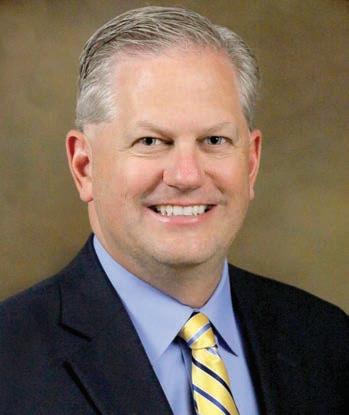
local restaurants to first responders in New York City. During the joint effort, we were able to serve more than 3,100 meals to EMS dispatch centers in Brooklyn and the Bronx, multiple EMS stations, the mechanics of the Fleet Services Division, and other critical FDNY personnel.
We will continue to help as much as we can and applaud our members who are doing the best they can in their respective communities. We want people to know we are here for any support and assistance we can provide, so please reach out to us if there is anything we can do to ease the burden during these turbulent times. We are, after all, one big family.
Our industry, and our nation, will get through this together. We still fully believe the long-term industry future is bright and we are still striving to meet our achievable goals by 2030. Policymakers around the country are pursuing their own goals to reduce carbon and embrace cleaner-burning fuels. We are excited to share the message that biodiesel and renewable diesel are better, cleaner, and available now! u






By Alayna DeMartini
Though the COVID-19 pandemic has cut demand for many U.S. products, agricultural exports are holding up well, according to a new analysis by an agricultural economist with e Ohio State University. e reason?
“We all have to eat,” said Ian Sheldon, a professor in the College of Food, Agricultural, and Environmental Sciences (CFAES).
Even when consumer income declines, the demand for food changes very little, Sheldon said. People in the developed world might be dining out less frequently, but they’re still buying groceries.
Exports of U.S. agricultural goods, including soybeans, which are Ohio’s top agricultural export, are up, Sheldon said. By the start of June, the amount of U.S. soybeans exported was 200,000 tons higher than it was for the same period in 2019.
“ e pandemic has a ected ag trade, but not by as much as we thought it would,” said Sheldon, who serves as the Andersons Endowed Chair in Agricultural Marketing, Trade, and Policy in the CFAES Department of Agricultural, Environmental, and Development Economics.
While the tons of U.S. soybeans currently being exported is higher than the level in 2019, the value of soybeans has gone down, Sheldon said.
The world price of soybeans and other agricultural commodities has been low in recent years, spurred in part by the U.S.-China trade war, which began in 2018 with the first round of tariffs applied to U.S. imports from China, Sheldon said. China reciprocated with tariffs on

Analysis done at e Ohio State University shows that despite the global pandemic, U.S. ag exports are doing relatively well.
American products, including imports of soybeans.
“The trade war had already put a big dent in the amount of soybeans leaving the United States and ending up in China,” Sheldon said. “It’s too early to tell if COVID has pushed it even further.”
With tari s on U.S. soybeans sold in China, private trading companies have been buying more and more soybeans from Brazil. China also is importing more agricultural commodities from Australia, New Zealand, and the European Union, Sheldon said.
“ at’s not been good for Ohio soybean farmers in particular and Ohio agriculture in general,” he said.
Despite these challenges, the Ohio Soybean Council (OSC) and soybean checkoff have been hard at work promoting U.S. soy to the global market. While most international travel has been put on hold, virtual conferences like the U.S. Soybean Export Council’s Asia Trade Exchange
have maintained those relationships with international buyers. The conference hosted over 830 customers and soybean industry representatives from more than 25 countries and provided opportunities to connect buyers from Southeast Asia and South Asia with U.S. exporters and U.S. soybean farmers. Like other sectors of agriculture, U.S. soy is learning to adapt. u
Sheldon’s analysis of the economic impact of COVID-19, which he did with Jason Grant, an associate professor at Virginia Tech, is part of a broader study of the impact of the pandemic. That broader study was sponsored by the Agricultural & Applied Economics Association in collaboration with the Council for Agricultural Science and Technology (CAST). A link to the CAST study can be found at: go.osu.edu/ covidimpact

A recent public opinion survey demonstrates that Ohio voters hold farmers in high regard – and that support has grown in recent years.
Results of the poll, conducted in May for Fallon Research, reveal that Ohioans think farmers merit public support in difficult times, they don’t point the finger at them for Lake Erie algal blooms, and they believe voluntary measures, awareness and public funding are better approaches to water quality than new regulations.

Farmers don’t get all the blame for Lake Erie algae
A diminishing share of Ohioans point the finger at agriculture for Lake Erie’s problem. When asked, “Which is the primary cause of toxic algae in Lake Erie?” Ohio voters responded as follows:
22.5%
When we asked the same question in 2018, 18.4% cited farming practices as the primary cause of toxic algae; in 2017, it was 18.9%.
Since 2017, public opinion has improved 5.4%.

You care, and it shows
Year over year, Ohioans know protecting water quality is one of your top priorities. When Ohioans were asked, “What would you say best characterizes the attitudes of farmers toward water quality?” they responded:
Protecting water quality is their top priority - 29.9%
They will do more, but not if affects food production - 21.7%
They will do more, but not if affects profits - 28.5%
Farmers don’t care about water quality - 6.8%
Unsure/no answer: 13.1%
These numbers have held steady in recent surveys, although the share of Ohioans who believe farmers want to do more without hurting food supply has grown 3% since 2018.

Funded, voluntary measures are the answer

Ohioans support publicly funded, voluntary solutions to protect Lake Erie. When asked, “What do you believe is the best way for farmers to address water quality?,” Ohioans said:
Increased public funding to offset costs of good practices – 19.3%
More effective voluntary farming methods – 17.7%
More regulations on farming – 15.1% (2018: 21.9%)
Unsure/no answer – 13.1%
All – 5.3%
A strong plurality of Ohioans endorse approaches consistent with the H2Ohio program, while the percentage of Ohioans choosing more regulations has dropped more than 6% since 2018.




Farmers have earned financial support
In the toughest of times, Ohioans have your back. When asked, “What do you think is the best way to help farmers who have been adversely impacted by severe weather patterns and COVID-19?” Ohio voters made it clear they support:
Giving farmers more public support than other they are critical to the food supply and economy – 47.8%
Giving farmers continued public support, but no more than other industries – 41.3%
Letting farmers fend for themselves – 4.7%
Unsure/no answer – 4.3%
All – 1.8%
It’s difficult to imagine as much universal appreciation for any other industry. An overwhelming 89% support public support for farmers during tough times, with almost half declaring that agriculture deserves more assistance than other industries.


Ohioans are split on trade policy, but unified in protecting farmers. When Ohioans were asked, “What best describes your view of the U.S. trade dispute with China?” they responded as follows:
It is necessary to deal with China, but we must find a way to compensate farmers for their loss – 34.8%
It has harmed farmers and our economy, and we should find another way to address China – 33.1%
We must get tough on China, no matter the cost to farmers – 21.4%
Unsure/no answer – 9.2%
All – 1.4%
While there is no clear consensus on trade policy with China, it is encouraging that 68% want to protect agriculture from bearing its consequences.

This message brought to you by Ohio Corn, Small Grains and Soybean Checkoffs.






By Laura Lindsey, Associate Professor at The Ohio State University
When I interviewed for my position at The Ohio State University (OSU) in 2012, I was told that Ohio Soybean Council (OSC) invests soybean checkoff dollars and expects a return on their investment. That statement helps shape my research and extension program. Over the past several years, with funding from OSC, my lab has conducted applied research to create management recommendations for soybean. These projects have then fed into my extension programming, including the Ohio Agronomy Guide, field days, newsletters, and winter meetings. Here is a summary of our recent projects:
Double crop soybean production following winter wheat is common in the southern portion of the state. However, with recent expansion of the winter malting barley industry, double crop soybeans are now produced in more northern areas of Ohio as winter malting barley can be harvested seven to ten days earlier than winter wheat. With funding from OSC and United Soybean Board, double crop soybean management guidelines were revised to include northern areas of Ohio. When double crop soybeans are planted in late June, seeding rate should be increased so that there are between 130,000 to 150,000 plants per acre at harvest. If double crop soybeans are planted even later, during the first part of July, final stand should be no less than 180,000
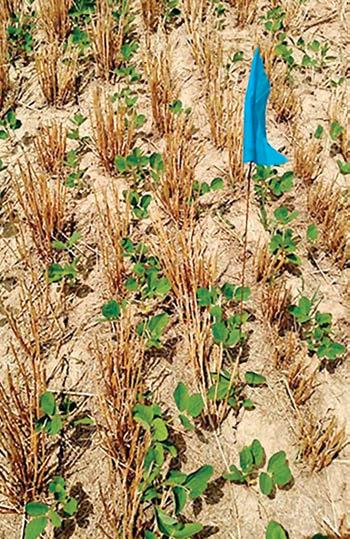
plants per acre at harvest. We generally seed our double crop soybean trials at 200,000 to 250,000 seeds per acre to achieve these final stands. Additionally, when soybeans are planted later, disease and insect pressure can change, so we also investigated the use of seed treatments and foliar fungicide and insecticide on double crop soybean. Overall, these products provided very little benefit to soybean. Fungicide and insecticide products should only be applied when disease and insects are yield-limiting. A full summary of our double crop soybean research can be found as a FactSheet on Ohioline at: https://ohioline.osu.edu/factsheet/ agf-103.
In 2018 and 2019, we evaluated the use of a rye:oat cover crop mix
planted in the fall prior to planting soybean. We examined cover crop planting date (ranging from September through October). We also examined cover crop termination timing: early (approximately four weeks prior to planting soybean) vs late (approximately two weeks prior to planting soybean). My very enthusiastic graduate student collected a lot of measurements, including soybean stand counts, slug pressure, leaf area affected by foliar disease and insect defoliation, soybean cyst nematode population, insect identification (beneficial and defoliators), insect pod damage, seedling disease-causing pathogen collection and identification, and grain yield. The impact of the cover crop on slugs, insects, and diseases was mostly non-significant. Grain yield was influenced by cover crop terminating timing, but results varied between the study locations. At the Northwest Agricultural Research Station in Wood County, grain yield increased by 1.2


to 2.9 bushels per acre when the cover crop was terminated late compared to the early termination treatment. However, at the Western Agricultural Research Station in Clark County, the cover crop did not influence grain yield in 2018 or 2019.
Soybean planting date x seeding rate interaction
Seed makes up a large portion of soybean production costs. When soybeans are planted before May 20, a final plant population of 100,000 to 120,000 plants per acre is generally adequate to maximize grain yield. But, what happens when soybeans are planted later? Farmers are often forced to plant soybeans in late May through early June due to wet weather in the spring. (In fact, our soybean planting date x seeding rate study was postponed until 2020 since we had a hard time planting in 2019 as well!) This year, we
began a study to identify the optimum soybean seeding rate for four planting date timeframes (late April to early May, mid-May to late May, early June to midJune, and late June to early July). Our seeding rates ranged from 50,000 to 250,000 seeds per acre. Another one of my very enthusiastic graduate students is collecting a lot of measurements to better understand how soybean plants compensate for lower plant populations. He’s taking measurements twice per month examining stand, plant-to-plant spacing, height, and growth stage. Stay tuned for results this winter!
I’m extremely appreciative of OSC and the soybean checkoff support for research and extension deliverables. In my opinion, though, investment of funds into graduate student training through the funding of research projects is one of the best returns on investment. Over half of my graduate students have stayed in Ohio. (The others ended up
in Indiana and Michigan.) They work as industry agronomists, research associates, and extension educators. u
To learn more about the soybean agronomy program, research and extension activities, and students, check out the Soybean & Small Grain Agronomy website at: http://stepupsoy.osu.edu
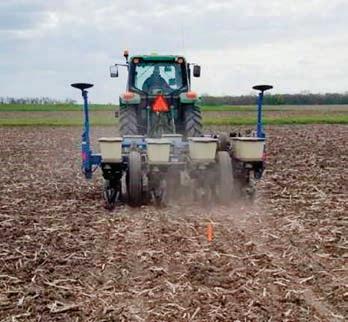











Anew meta-analytical study reinforces U.S. Soy’s reputation for being a global leader in quality and nutrient-density. The study, entitled, “Chemical composition, protein quality and nutritive value of commercial soybean meals produced from beans from different countries,” demonstrates that not all soybean meals are created equal and that meal from different countries of origin should be treated individually when formulating swine and poultry diets. The data from this study were then processed by the Nutrient Value Calculator (NVC), a software tool constructed by Genesis Feed Technologies, a company built to bring visibility into feed costs. This cost analysis supported the economic benefits of U.S. soybean meal relative to meal from other origins as a key ingredient in poultry rations.
Dr. Gonzalo Mateos, Professor of Animal Science at the University of Madrid in Spain and study co-author, first presented findings from the metaanalysis at the U.S. Soybean Export Council’s (USSEC) Asia Trade Exchange to 850 U.S. Soy customers and soybean industry representatives. This pioneering compilation of research is the most comprehensive quality review of soybean meal that has ever been conducted, and it gives customers greater clarity around soybean meal quality from different countries of origin. The meta-analysis looked at 18 different studies and 1,944 samples to quantify the relationship between country of origin of the bean and the chemical composition and nutritive value of the soybean meal. Soybeans from the following origins were analyzed: Argentina (ARG), Brazil (BRA), USA (USA) and India (IND).
“One of the main points from the study, is that customers should be using
different matrices for the evaluation of the nutritional value of soybean meals of different origins,” said Mateos. “If they buy only based on protein or vegetable sucrose content, they may buy a product that is actually lower quality. Therefore, it is important to check all of the values that are related to the nutritive value of the soybean meal before making purchase decisions, which this study addresses.”
aforementioned meta-analytical study, premiums of U.S. soybean meal range from $14.57 to $23.24 per tonne over Argentine soybean meal and range from $2.48 to $10.26 per tonne over Brazilian soybean meal.
“U.S. soy and soybean meal products offer a price advantage and rank first on a number of important nutritional attributes when compared to other

The data in this meta-analysis forms a new key pillar of the economic evaluation of soybean meal in global markets. Using the Nutrient Value Calculator from Genesis Feed Technologies, the economic value of U.S. soybean meal can be evaluated in global markets using formulas representative of the regional feed manufacturers. Nutrient values and prices of all the other components of the diet are also used in this calculation. The NVC indicates that U.S. soybean meal is the leading contributor to cost reduction in broiler diets.
When comparing cost reductions with incorporation of data from the
origins, including remarkable amino acid and energy profiles,” said Paul Burke, USSEC’s Senior Director for U.S. Soy Marketing. “This will continue to ensure we deliver a valuable, consistent and more economical product that our customers can count on.”
Soybean meal is an important source of protein for the global feed industry, where it is used in livestock, poultry and aquaculture diets. To meet this demand for animal feed, the farmers that grow sustainable U.S. soy not only care about being a reliable supplier but take pride in providing a high-quality product to their international customers. u


Precision Ag Reviews has launched a new podcast, Precision Points. The ag tech podcast inspires informed decisions about precision technology and its impact for growers.
The Precision Points podcast, along with Precision Ag Reviews, is funded by the Ohio Soybean Council and the soybean checkoff to provide a reliable, unbiased source of information about precision technology to U.S. farmers.
“We’ll be exploring precision ag tools and technology that push boundaries for innovation in an operation, while addressing the bottom line implications,” said host Morgan Seger. “Guests will include growers for real feedback as well as insights from manufacturers.”
Precision Points will be hosted by Seger, who spent 10 years working in ag tech and farms with her husband in western Ohio.
“The unbiased information will help growers looking to get the most out of the tools they already have and be helpful for those looking to explore the next step in their operation,” said Seger.
Each podcast season will focus on the growing seasons to keep content relevant to a farmer’s operation. The first season, available now, will feature in season management tools and services growers can be using now to impact their growing crop.
Precision Points is available on your favorite podcast player, on PrecisionAgReviews.com or on YouTube.
The Precision Points podcast enhances the outreach of Precision Ag Reviews, an online crowd-based review forum of precision technology in agriculture.

In Episode 1 of Precision Points, Morgan Seger introduces John Fulton, Ph.D. to the podcast and talks about how he comes up with his research projects and how individual growers can make precision ag decisions.
In Episode 2 of Precision Points, Morgan Seger talks with Josh Krenz, COO of EarthScout, about in-field monitoring sensors, and the decisions that can be influenced with that data.
In Episode 3 of Precision Points, Morgan Seger sits down with Keaton Krueger, Sr. Digital Technology Manager with WinField United to discuss how Crop
Modeling works, and the decisions and insights it can bring to your farm.
In Episode 4 of Precision Points, Morgan Seger talks with Rachel Leonard, Development Program Lead with Geosys, and Urthecast Company.

Rachel talks about the work Geosys is doing to capture and calibrate satellite imagery for farm level use, and their new technology designed to sort through the data and prioritize what is important to your operation. u










“THE CHECKOFF HAS BEEN A HELP TO US. IT'S OPENED FOREIGN MARKETS AND FUNDED RESEARCH ON DISEASES AND FUNGI. THE RESEARCH AND DEVELOPMENT HAS JUST BEEN VERY POSITIVE.”
-JAN LAYMAN, KENTON, OHIO













BY INVESTING IN THE SOYBEAN CHECKOFF, FARMERS ENSURE END-USER DEMANDS ARE MET WHILE RAISING SOYBEANS PROFITABLY. USING INFORMATION FROM THE OHIO SOYBEAN COUNCIL, FARMERS TRACK RESEARCH ON NEW VARIETIES, NEW USES AND NEW FOREIGN MARKETS TO GROW NEW OPPORTUNITIES.
LEARN MORE AT SOYOHIO.ORG/HEREWEGROW.